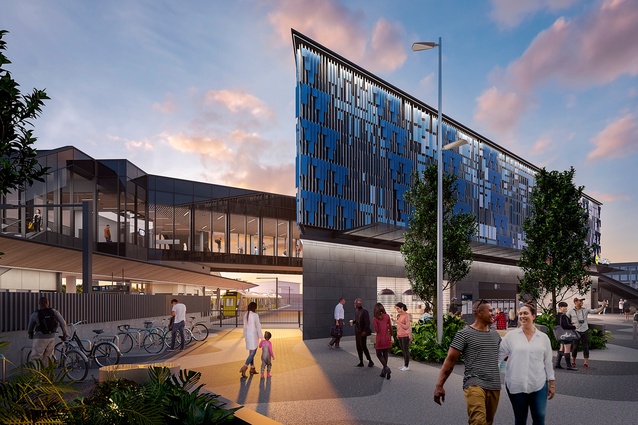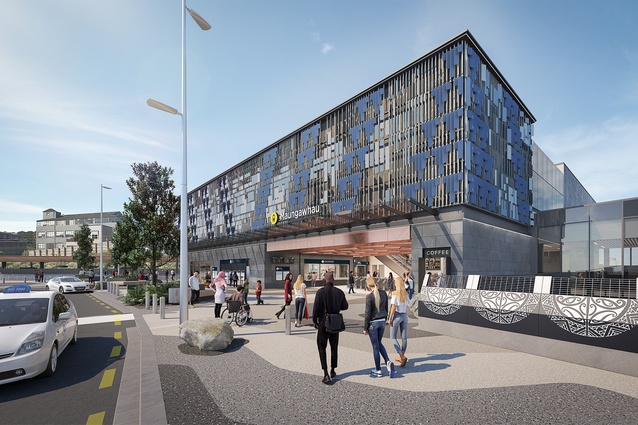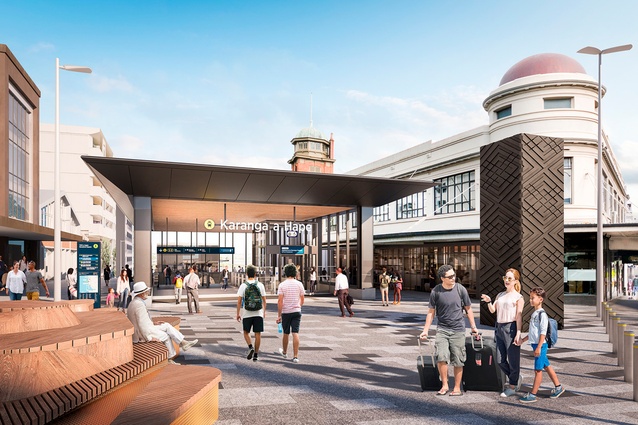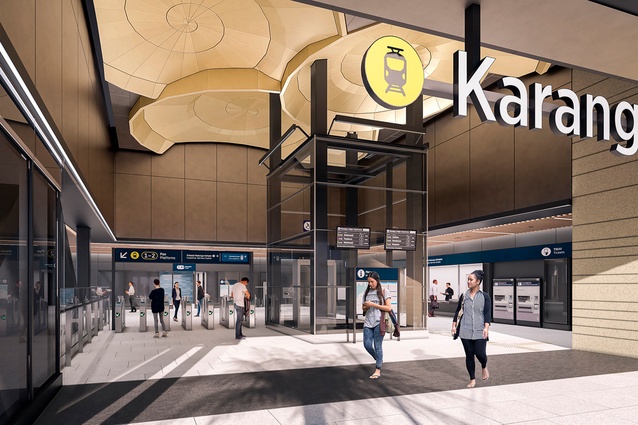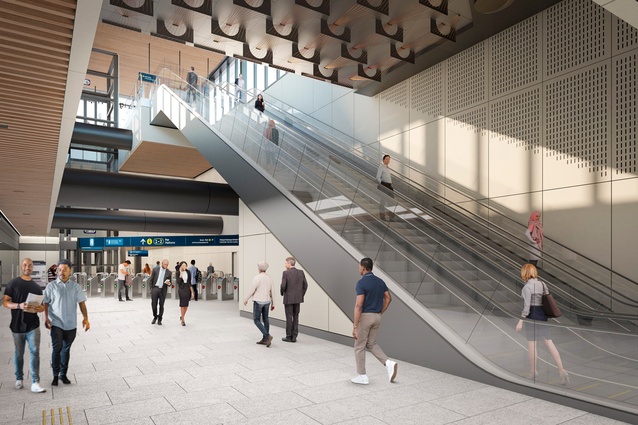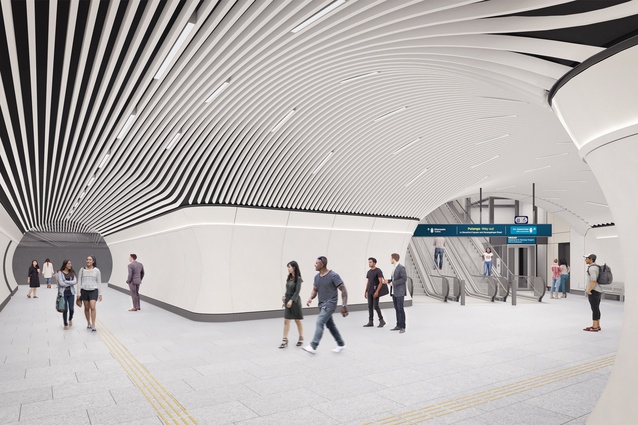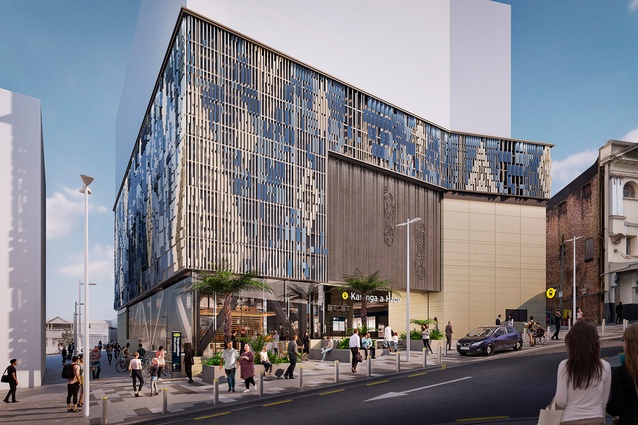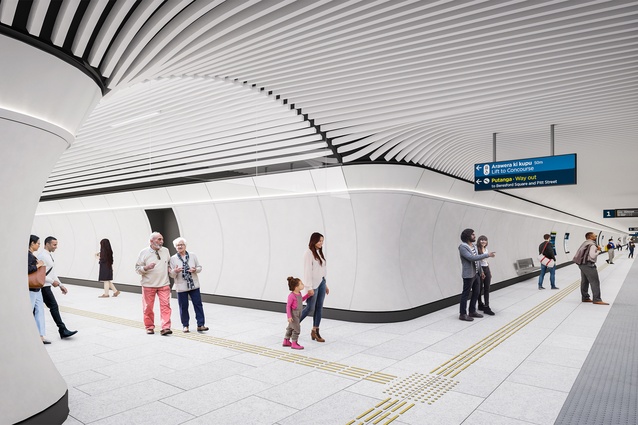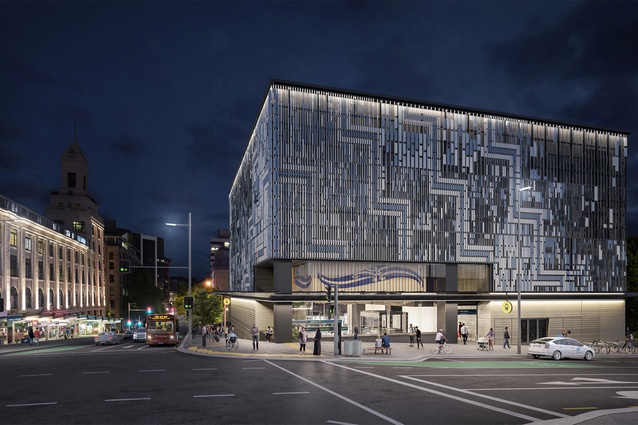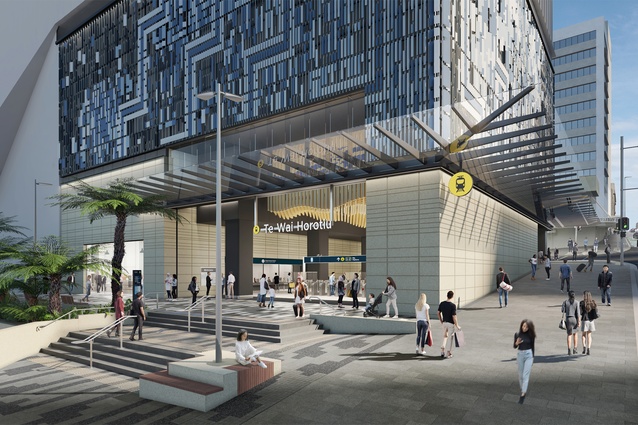City Rail Link - Final station designs revealed
The final designs for the three new train stations under construction in Tāmaki Makaurau Auckland have been revealed. The project for City Rail Link is the largest infrastructure project ever undertaken in Aotearoa, New Zealand.
Together, the stations along with the existing Britomart Station will form a new underground rail connection through Auckland’s CBD to provide commuters with a swift option for getting around the often congested central city.
Transport Minister Michael Wood says the stations will become cornerstones of a modern, vibrant, and connected city:
“Every day tens of thousands of Aucklanders will use these stations. They will drive urban renewal including new housing, commercial activity, and cultural expression. They will also be beautiful public spaces that make Aucklanders proud to use public transport. The Government is committed to delivering a linked-up transport network that includes CRL, making it faster to move around the city, connecting communities, providing greater access to businesses, all while reducing congestion.”
The train stations designed by Grimshaw (with consultation from Jasmax) in collaboration with WSP (part of the Link Alliance), and in partnership with mana whenua, take inspiration from Te Ao Mārama, the Māori creation story, as well as historic and present-day geographical features.
Working together with CRL Ltd’s Mana Whenua Forum, the design team consulted and collaborated with eight local iwi to create a design language that reflects each of the sites’ cultural narratives and history.
In addition, the naming of each station has been derived from the Māori place names for where each station is located. The names reference historical landscape features and traditional land usage which directly informed the pattern motifs used for each station.
“The process is about reinstating the traditional names of the areas the stations will serve — looking back to a time before concrete and skyscrapers when people lived off the land. When we re-establish a traditional name, for example Maungawhau, it offers a sense of place,” - CRL Ltd Mana Whenua Forum
The te reo Māori names gifted to the City Rail Link stations are:
- Maungawhau (a redeveloped station at Eden Terrace/ Mt Eden where the CRL connects with the North Auckland (Western Line))
- Karanga Ā Hape (a new station just off Karangahape Road - with entrances at both Mercury Lane and Beresford Square)
- Te Wai Horotiu (a new mid-town station with entrances at Wellesley and Victoria Streets)
- Waitematā (the Britomart station at the bottom of Queen Street is being transformed into a two-way through station, that better connects the city’s rail network)
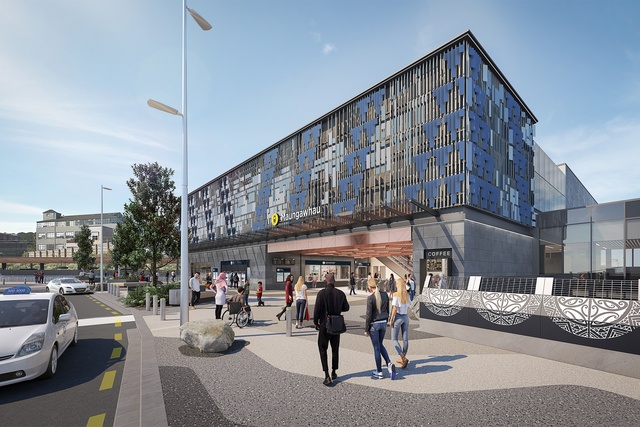
Maungawhau is the traditional name for Mt Eden, translating quite simply as mountain-of-the-whau-tree, ‘whau’ being a type of cork tree that once covered the mountain and was used for medicinal purposes as well as for fishing floats.
The entrance to Maugawhau station draws its main inspiration from the mountain’s volcanic past, being one of the more prominent cones in the isthmus. It features a floor-to-ceiling wall made from triangular-patterned pre-cast concrete with basalt inserts. The basalt references the atua Mataoho, the deity responsible for the basalt laden volcanic field in Tāmaki Makaurau, Auckland. It comprises 53 lava-coloured cast-glass triangles that are organised to represent a map of Auckland’s volcanic field.
A focal point of this wall is an inset water feature in the form of a large basalt triangle. This design feature pays respect to Parawhenuamea (atua of freshwater) and how freshwater needs kōhatu (rock) to flow.
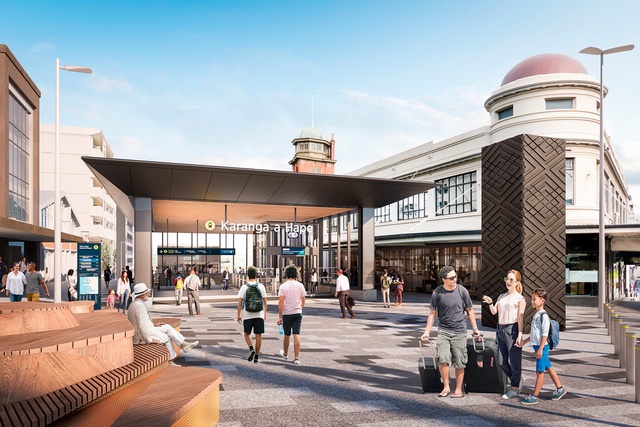
Karanga Ā Hape (a grammatical correction of Karangahape the natural ridge along where Karangahape Road runs), refers to ‘the great calling of Hape’, a historic figure who was (in legend), left behind by his people when he was denied passage across the ocean in his waka.
While all four CRL stations are designed around the Māori creation story with Ranginui (the sky father) and Papatūānuku (the earth mother), the design for the Karanga Ā Hape station references their son, Tāne Mahuta, God of the forest who was responsible for separating his parents, thereby creating space for the world in which we now inhabit.
Here you see allusions to the kauri tree (a tree with strong associations with Tāne Mahuta), along with large pupurangi snail shells on the ceiling of the Beresford Square entrance to the station, a reference to the symbiotic relationship these native snails have with kauri trees.
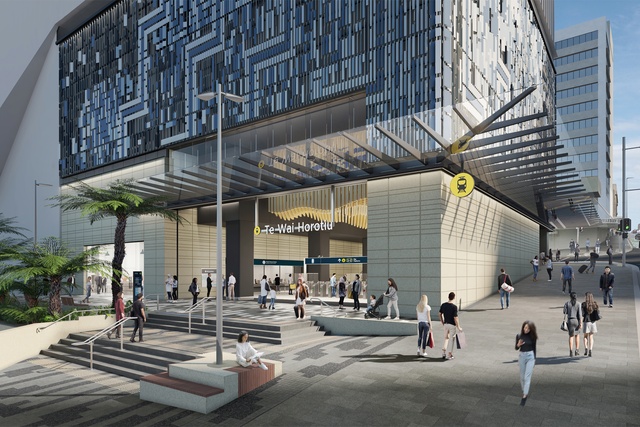
Te Wai Horotiu is a reference to the stream that once ran along Queen Street in the CBD known as Te Waihorotiu stream and wetland. The stream was an important source of freshwater for local iwi.
Te Wai Horotiu (Aotea), features rods of varying lengths that are suspended from the ceiling at the entrance. The undulating pattern they create mimics the flow of water as well as evoking the kaitiaki of the area (a taniwha), as commuters flow through the station.
And lastly, Waitematā Station (currently Britomart), takes its name from the nearby Waitematā Harbour. The station was built on reclaimed land that was taken from the harbour close to where the waters of the harbour and Waihorotiu converged; a mingling of waters and people. Just outside the station’s main entrance — The heritage-listed Chief Post Office Building — is Auckland’s newest civic space, Te Komititanga, which means to mix or merge.
A Karanga Ā Hape Station flythrough (circa 2018) including the Beresford Square end.
An animated flyover showing the overall layout of the new City Rail Link stations.
For more information on the core design language. including a video detailing each station’s design ethos, see this article City Rail Link explores native design.

